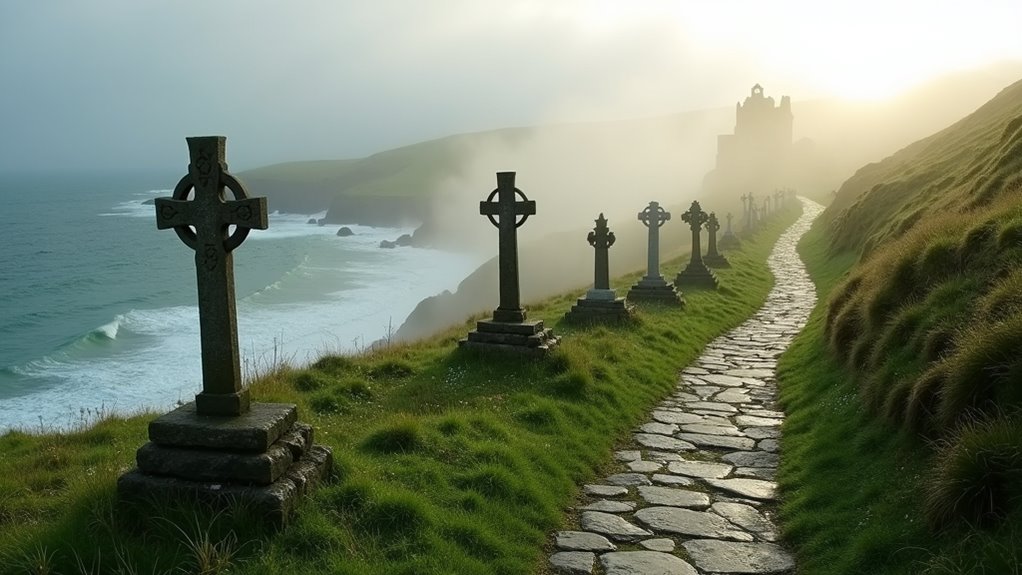Rugged coastlines and ancient myths—these are the hallmarks of Northern Ireland’s wild trails, where untamed landscapes collide with centuries of history at every turn. The UNESCO-listed Giant’s Causeway, with its dramatic hexagonal basalt columns stretching into the sea, offers visitors a geological marvel wrapped in legends of giants and folklore that somehow feels more plausible when you’re standing there, wind whipping your face, than any rational explanation ever could.
Where myth meets landscape, reason bows to wonder at the wind-swept edge of Ireland’s ancient coast.
This summer, travelers are trading crowded city squares for the expansive solitude of the Ulster Way’s 1,000-kilometer circuit. The Causeway Coast Way—a breathtaking 52-kilometer stretch hugging the Antrim coastline—has become particularly popular, drawing hikers brave enough to cross the vertigo-inducing Carrick-a-Rede Rope Bridge (suspended heart-stoppingly high above churning Atlantic waters).
The pristine beaches of Donegal and the towering Slieve League Cliffs provide a different kind of escape—one where the rhythmic crash of waves against ancient rock faces drowns out the persistent ping of email notifications. Here, glaciated landscapes tell tales of ice ages past while diverse flora and fauna (seemingly oblivious to their Instagram potential) thrive in protected habitats. For serious hikers looking for a challenge, the terrain rivals The MacGillycuddy’s Reeks in Kerry, offering both easy walks and strenuous mountain experiences.
Beyond their natural splendor, these trails weave through villages steeped in history and tradition. Pilgrimage paths—once traveled by devoted worshippers—now guide a new kind of seeker, one searching less for divine revelation and more for an antidote to modern life’s relentless pace. The majestic Mourne Wall traverses fifteen mountain summits, offering experienced hikers an exceptional challenge with rewarding panoramic views. Local economies have responded accordingly, with rural businesses flourishing as trail-weary hikers seek hot meals and comfortable beds.
Environmental preservation remains vital as visitor numbers grow. Conservation efforts and sustainable tourism initiatives guarantee these wild trails will captivate future generations. The paths themselves—sometimes rain-soaked, occasionally sun-drenched, always soul-stirring—offer multi-day hiking experiences that city breaks simply cannot replicate. Autumn visits can provide immersive experiences of Ireland’s natural beauty without the crowds that often detract from summer walks.
In Northern Ireland’s wild landscapes, travelers aren’t just exploring terrain; they’re rediscovering a fundamental connection to something older, wilder, and infinitely more profound than urban existence.









